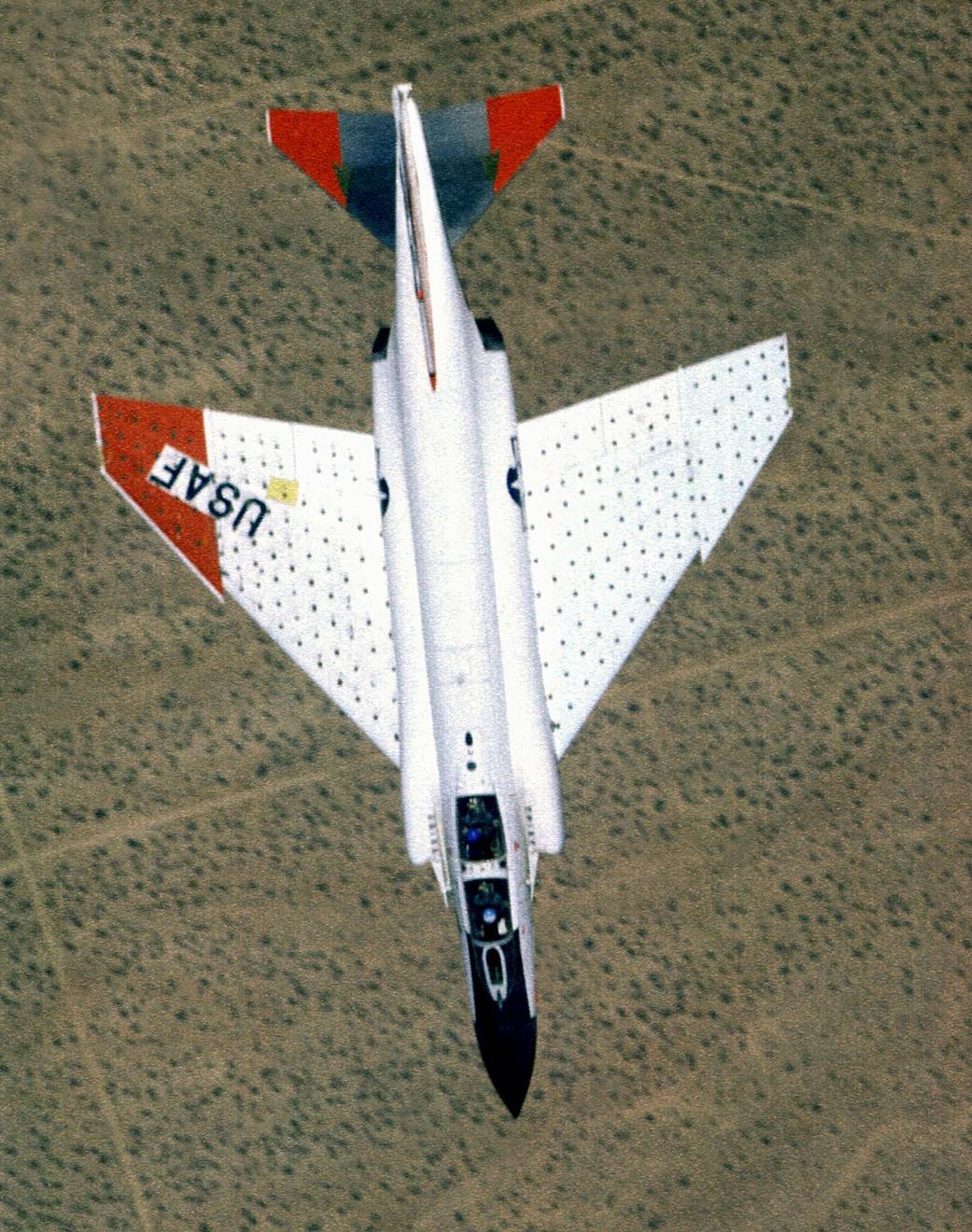ECN-29797
Photographed from above in 1984 the “tufting” on the upper surfaces of the F-4C wings are clearly seen.
The McDonnell F-4C Phantom II was built for the U.S. Air Force and is a twin seated fighter-type aircraft with folding wings and powered by two J-79-G.E.-15 Turbojet engines. An experiment to expand on some previous spanwise blowing testing, was proposed for this aircraft. The U.S. Air Force and McDonnell Douglas had conducted testing where J-79 engine high pressure bleed air from the compressor was piped forward along the inside of the fuselage, and expelled through a nozzle in the fuselage near the wing’s leading edge and just above the surface. NASA Ames-Dryden Flight Research Facility looked at extending the spanwise blowing by bring the engine air further out through the wings, and onto the upper wing surface
Small pieces of strings, called “tufts” were taped to the upper surface of the wings. The “tufts” are photographed from a chase aircraft and provide a visual record of the boundary layer flow with and without spanwise blowing.1984NASA Photo / › F-4C Project Description
1 min read

























